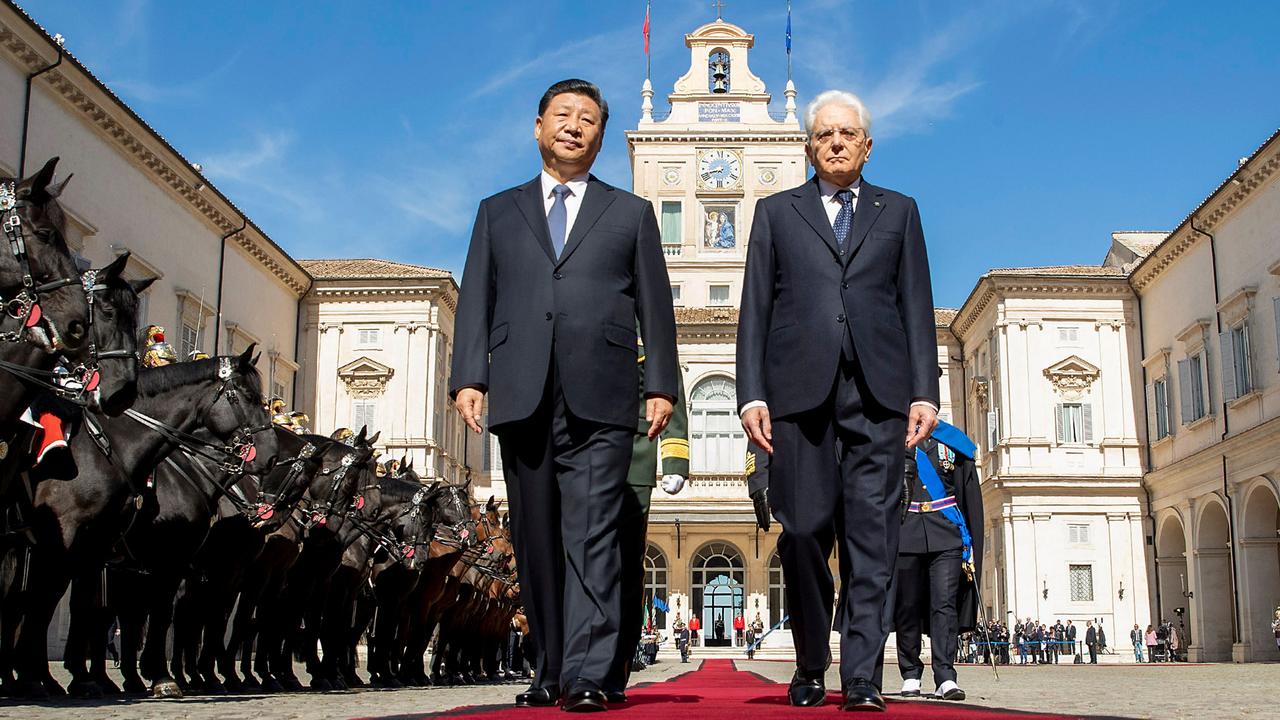Xi Jinping’s battle for blue skies over China
China’s blitz against pollution means the demand for Australian gas will keep rising for a long time to come.
Beijing has been blessed by blue skies for most of the northern winter so far with no sign of tangy coal dust in the air.
Is this sustainable? If so, in the medium to long term it will cement China’s position as a massive market for Australian gas — soon overtaking South Korea to become the nation’s second biggest after Japan.
The clear skies are the result of a government blitz ordained by President Xi Jinping, as he seeks to prove that state promises about improving the environment can be trusted. All over northern China, in the region surrounding the capital, coal-fired boilers have gone cold, construction projects have stopped, factories have closed down.
Local governments — whose officials’ salaries have in the past been tied to boosting growth, and which are expected to lift their revenues largely from land deals and the resulting business growth — are being brought to heel.
Last year the central government began to introduce an “ecological civilisation” evaluation system to rate and reward — or punish — local officials over resource and environmental protection, with enforcement teams that conduct audits including staff from the feared Central Commission for Discipline Inspection.
Xi is showing he means business. He intends to ensure that a series of targets set for the end of this year, for the concentration of fine particulates in the air, are met. Beijing is on track to do so — its aim being an average 60 particles during 2017, just 10 above what the World Health Organisation views as the maximum for a healthy atmosphere.
This is good news for the health of the population. But it is not so good for many of those living in rural areas and in the outskirts of the big cities, or for those who are losing their jobs. Many are right now wearing extra layers of clothes because they lack alternative heating — and in some cases are struggling to cook.
Almost all do have access to electricity, but it is expensive for families on low incomes, especially in the countryside.
The official answer is that over time, they should have access to piped gas, even in remote villages.
The current five-year plan preserves a core but steadily diminishing role for coal in generating base-load energy. But coal is no longer tolerated for heating or cooking in households, businesses or schools — only in large power stations that are being reconfigured to deploy “clean coal” technology.
Gas will be used as a kind of bridging energy source as renewables technology improves sufficiently to take a share of the load.
The government aims to have half of northern Chinese homes heated with “clean energy” — chiefly gas — by 2019, and 70 per cent by 2021.
Under the five-year plan, gas will produce 10 per cent of China’s energy by 2020, up from 5.9 per cent in 2015, with consumption rising through the five years from 167 billion cubic metres to 360.
The pace of China’s nuclear power growth is also accelerating. China already has 38 generation plants and is looking to add 50 per cent more capacity in 10 years.
The National Development and Reform Commission has temporarily lifted the bans on coal use in poor districts where gas is not yet available.
China has only limited domestic sources of gas, chiefly in its northwestern region of Xinjiang, far from population centres, and offshore. It pipes gas from Siberia, but that supply is limited.
Australia is surpassing Qatar to become the largest supplier of LNG, reflecting the situation globally. At the same time, the global oil and gas market is being shaken up by the massive new growth of production in the US, which the International Energy Agency expects will become the global market leader within the next decade.
The IEA also says that the proportion of LNG used globally will keep rising.
And despite the accelerating US role, transport costs will ensure Australian LNG remains competitive for Chinese buyers.
In the next few months Australian output will increase dramatically, with the Wheatstone, Ichthys and Prelude gasfields all coming on stream.
The gas price in China has doubled since September as demand has increased — overtaking the capacity of the energy distribution companies to provide production facilities and lay enough pipes — while supply has stayed tight.
“And it is just the start,” said Zhao Yang, an analyst at Zhongyu Information Technology in Shandong. “Shortages will continue through the winters for a couple of years.”
Industry is expecting China’s demand for LNG to keep growing until it peaks in 2030. “All major LNG suppliers to China will benefit from this,” she said, “and Australia’s role as the largest is expected to be consolidated.”
Qie Jing, at Sublime China Information, says gas typically supplies 15 per cent of the energy market in developed countries, so China’s demand is expected to keep growing for a long time.
The industry is moving towards shorter-term supply contracts, because prices linked to oil prices are fluctuating so much. They are essentially market-driven — there is no regulatory mechanism.
Gavekal analyst Yanmei Xie concludes about Xi’s “battle for blue skies” in northern China that “pollution cannot be reduced by political will alone”. The emissions are produced by a huge physical infrastructure of power plants and factories, which will have to be transformed cleverly if the pollution falls are to be sustained, or else economic growth will choke.
And economic vitality is too crucial for the legitimacy of the party-state to be allowed to become collateral damage, even in the worthy cause of cleaning and greening China.




To join the conversation, please log in. Don't have an account? Register
Join the conversation, you are commenting as Logout